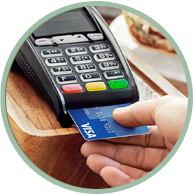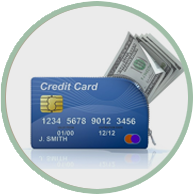CREDIT CARDS
Credit cards are a flat plastic or metal cards with a magnetic stripe that holds a machine readable code. They provide a short term loan, where the money you spend is actually borrowed from the card provider rather than debited from your personal account. They are used for building personal and business credit and are a powerful tool if used correctly.
Credit Card Statistics – Did You Know?
Learning how to use a credit card to improve your credit is important to your financial literacy and should be a personal growth goal. It is very difficult to buy a house, get a loan and to do other things with out good credit.
- Approx. 73% of the families have at least one credit card.
- About 60% of the cardholders are “convenience users” – they avoid interest charges by paying balances in full each month.
- There is a wide range of credit cards with varied features and benefits available in the market.
There is a wide range of cards with varied features and benefits available in the market. See the full list of popular credit card categories below.

Zero Percent Credit Cards

Secured Credit Cards

Travel Credit Cards

Rewards Credit Cards

Student Credit Cards

Prepaid Credit Cards

Sign Up Bonus Credit Cards

Online Shopping Credit Cards
Why use credit cards?

FASTER TO USE
Credit is faster and easier to use in comparison to cash. You just need to swipe your card.

ABILITY TO PAY INSTALLMENTS
The best cards give you an option to pay back the amount in installments. You can pay off your balance over a period of time. However, it’s best to pay off your outstanding balance in a timely manner.

REWARD POINTS
You get reward points for using cards. You can use these points for gifts, cash, miles, or more. The more you spend on credit cards, the more rewards you earn.
Things You Need to Know.
1. Interest rates
Your interest rate may vary from 0%-30%. Creditors consider many factors such as your credit score, income, assets, current debt load, credit inquiries, payment history and economic conditions to set your annual percentage rate (APR). Consumers with positive and proven credit histories gets the best (lowest) rates.
2. The contract is binding
Make sure to read the agreement carefully before signing the contract. The contract may include:
- Credit line/limit – It’s the total amount you might be charged, including interest and fees.
- Annual percentage rate (APR) – It is interest charged on carried-over balances. It’s usually high for paying after due date, balance transfers, cash advances etc.
- Fixed or variable APR -Fixed rate APRs have consistent interest rates whereas Variable APRs fluctuate from time to time depending on the amount you have to pay back.
- Grace period – A card holder receives a monthly bill that can be paid off before the due date without any interest. This is called grace period. The grace period is the number of days (generally between 20 and 30) in which you have to pay back fully before interest accrues.
- Fees – Fees include those for cash advances, paying late, balance transfers, exceeding your credit limit, and sometimes an annual fee.
- Credit score – The most important thing about is to maintain a good credit score. Maintaining a good credit score, in turn, will help you obtain loans much easily in the future, that too at very favorable rates. It also helps in getting lower insurance premiums.
Be aware that most creditors reserve the right to change any of these terms — so keep checking your mail for any adjustment notices.
3. What is Credit?
Learn what credit is and it’s history. The you can use it to increase your financial well being.
Tips To Choose the Best Cards
- Choose one that suits your needs. If you maintain a balance in your bank account, you can find great cards with low interest rates or 0% APR periods. If you don’t, you can ignore the APR and go for high rewards.
- You’ll need a co-signer on your card unless you have your own source of income.
- Building good credit can help you get a job and enhance your career. If you are a student look for a low or now fee student card to help you build credit.
Featured Post

Need a hand?
We’ve researched over 1,200 cards. Take a quick quiz for a personalized suggestion.